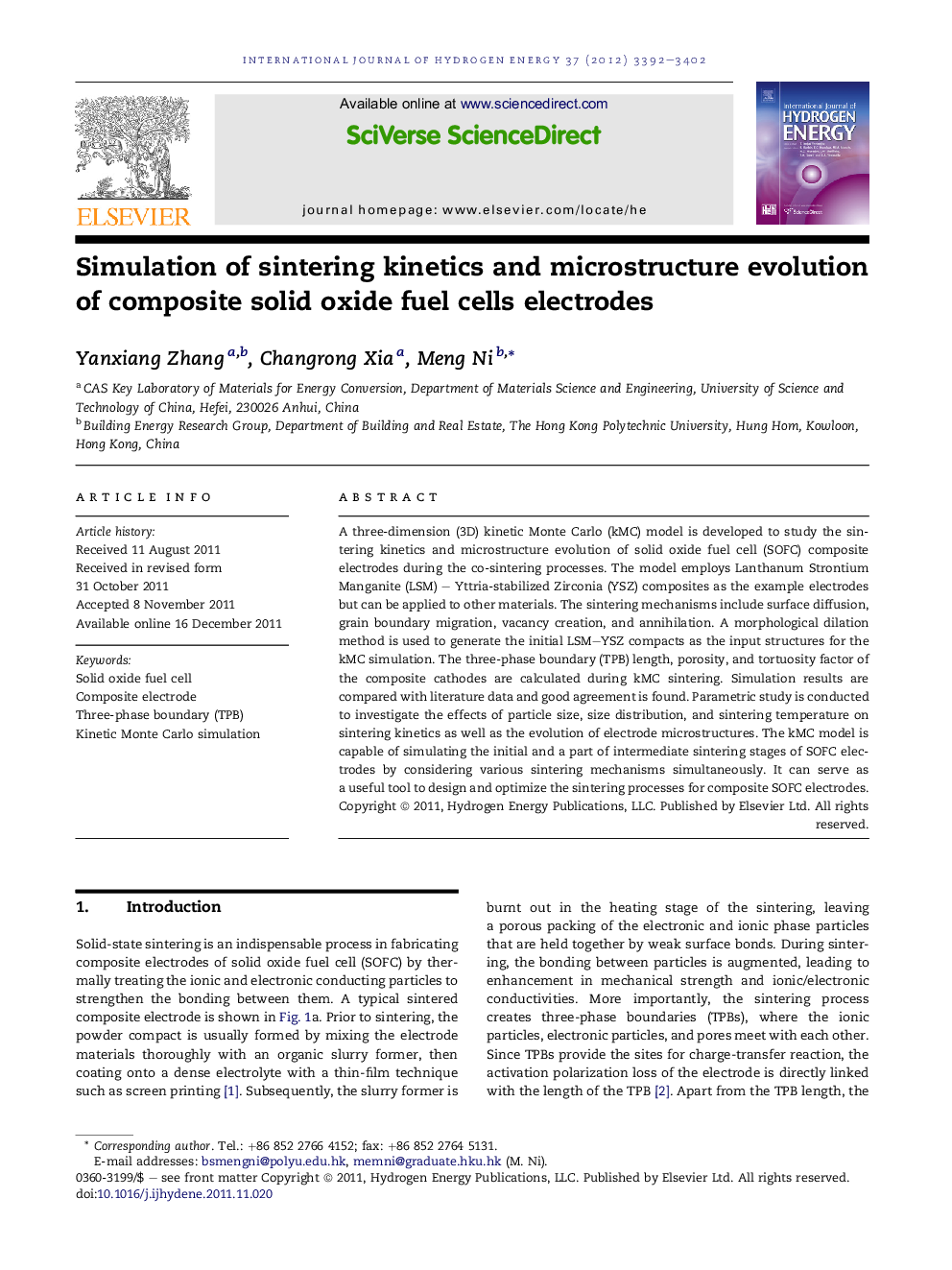| Article ID | Journal | Published Year | Pages | File Type |
|---|---|---|---|---|
| 1282347 | International Journal of Hydrogen Energy | 2012 | 11 Pages |
A three-dimension (3D) kinetic Monte Carlo (kMC) model is developed to study the sintering kinetics and microstructure evolution of solid oxide fuel cell (SOFC) composite electrodes during the co-sintering processes. The model employs Lanthanum Strontium Manganite (LSM) – Yttria-stabilized Zirconia (YSZ) composites as the example electrodes but can be applied to other materials. The sintering mechanisms include surface diffusion, grain boundary migration, vacancy creation, and annihilation. A morphological dilation method is used to generate the initial LSM–YSZ compacts as the input structures for the kMC simulation. The three-phase boundary (TPB) length, porosity, and tortuosity factor of the composite cathodes are calculated during kMC sintering. Simulation results are compared with literature data and good agreement is found. Parametric study is conducted to investigate the effects of particle size, size distribution, and sintering temperature on sintering kinetics as well as the evolution of electrode microstructures. The kMC model is capable of simulating the initial and a part of intermediate sintering stages of SOFC electrodes by considering various sintering mechanisms simultaneously. It can serve as a useful tool to design and optimize the sintering processes for composite SOFC electrodes.
► The sintering kinetics of SOFC electrodes is studied by a 3D Monte Carlo model. ► LSM–YSZ composites are selected as the example electrodes. ► The three-phase boundary length, porosity, and tortuosity factor are calculated. ► The effects of particle size distribution and sintering temperature are studied.
